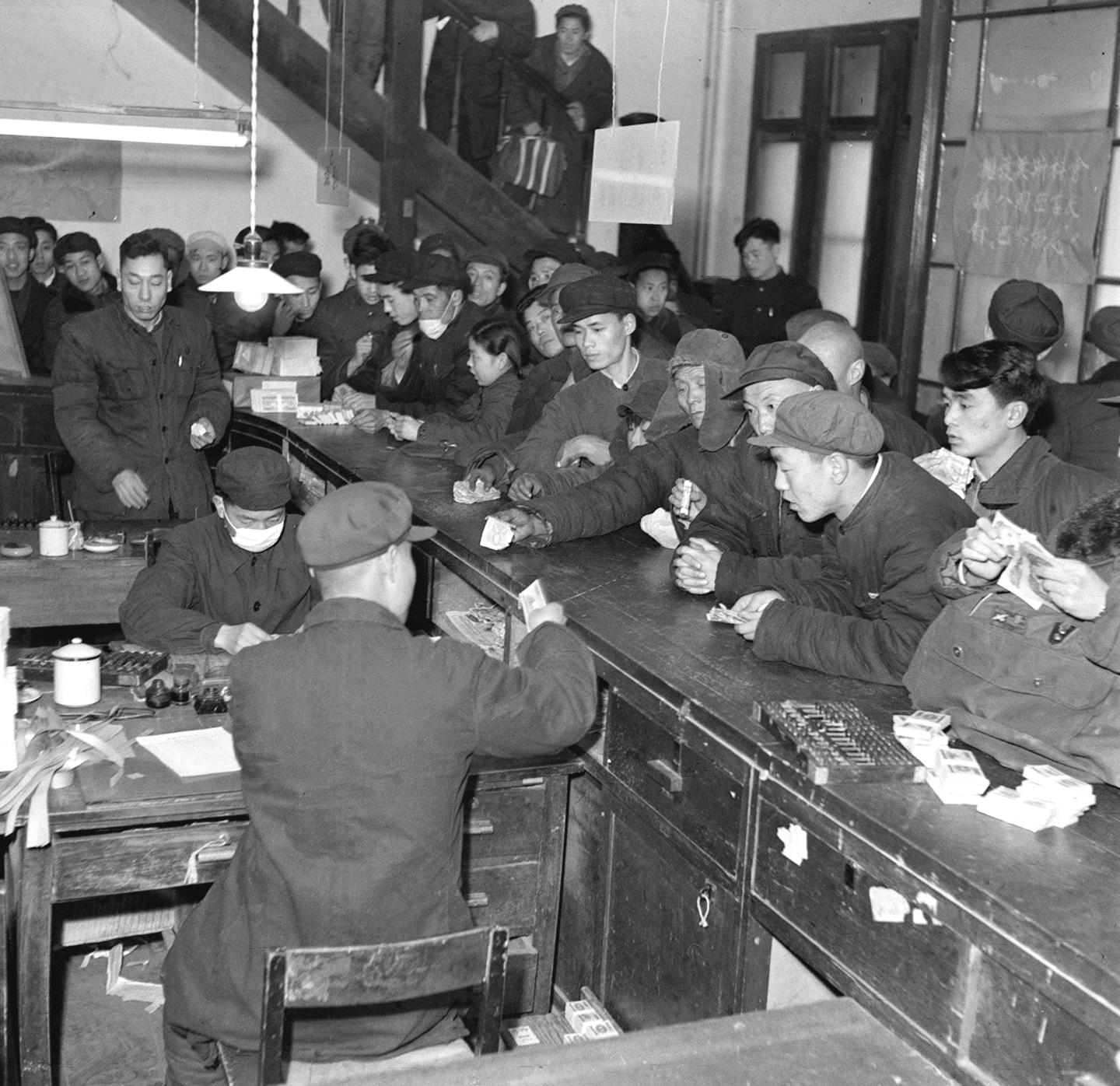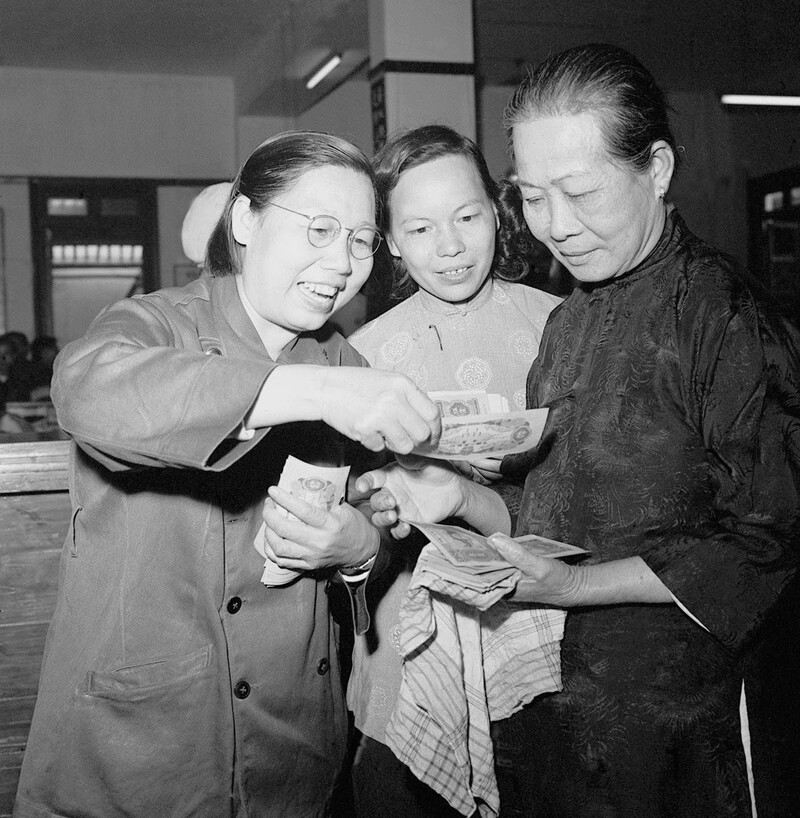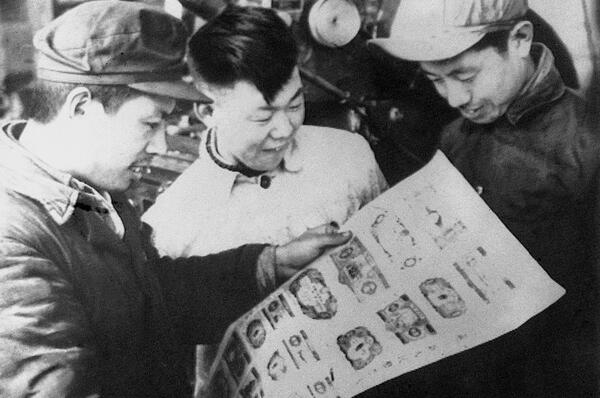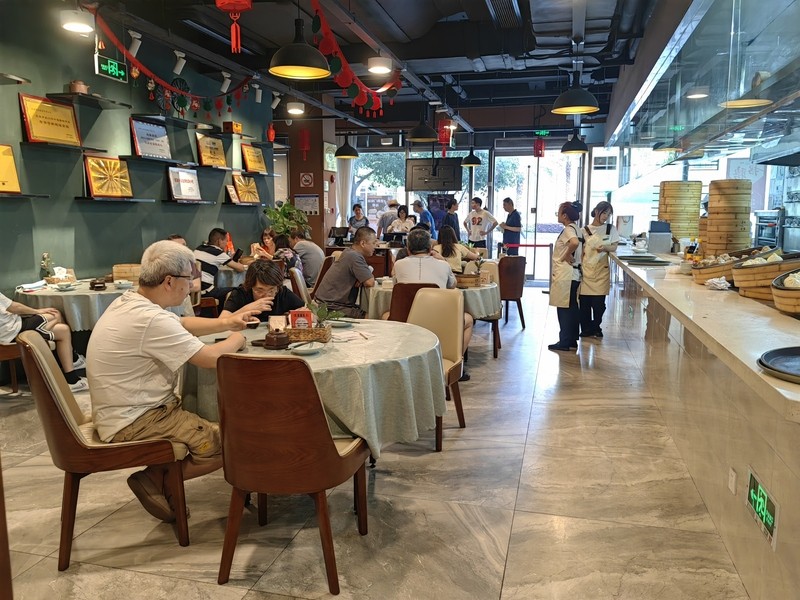The People's Bank of China was established and issued RMB. 75 years ago, New Currency | RMB | The People's Bank of China
This year marks the 75th anniversary of the establishment and issuance of RMB by the People's Bank of China. The currency of the liberated areas has been completely detached from gold and silver since its inception. As a guarantee of currency, it includes "more reliable food, cloth, cotton, and other important materials necessary for production and life than gold and silver.".
"Soon there will be a people's government"
In March 1948, the Central Working Committee and the North China Finance Office held a meeting to discuss issues such as establishing the People's Bank of China, issuing a unified currency, and organizing local currencies. In order to promote the unification of currencies in various liberated areas, the Central Committee of the Communist Party of China has decided to use the currencies of the North China and East China regions, as well as the North China, Jin Sui, and Northwest regions, at fixed prices.
In October, the Central Committee of the Communist Party of China issued an instruction on the issue of printing new currency, deciding that the People's Bank of China's new currency would be exchanged with Jinan banknotes and Beihai banknotes at a ratio of 1:100, and entrusted North China and East China to print 10 yuan, 50 yuan, and 100 yuan new currency, with the aim of achieving a printing volume of 5 billion yuan by the end of the year as much as possible; Printing should strive for precision, and personnel from the People's Bank of China should inspect the version and paper of the tickets, avoiding rough and shoddy production to prevent the spread of fake tickets.
In November, the entire Northeast was liberated, and the Northeast Field Army entered the border. The liberation of Pingjin was imminent. Due to the fact that Beiping and Tianjin are the junction of several liberated areas, there are several "tickets" in circulation from these areas, with inconsistent price comparisons, poor printing, and difficulty for the public to distinguish authenticity, resulting in inconvenience in circulation.
The Central Committee of the Communist Party of China has decided to advance the establishment of the People's Bank of China and the issuance of RMB. On December 1, 1948, North China Bank, Beihai Bank, and Northwest Farmers Bank merged to form the People's Bank of China, and simultaneously issued People's Bank of China banknotes, designated as the standard currency for the three regions of North China, East China, and Northwest, and circulated uniformly.
The name "People's Bank of China" originates from He Songting, Deputy Manager of the Jin Cha Ji Border Region Bank. Dong Biwu believes that it not only represents the People's Bank, which is different from Chiang Kai shek's Central Bank, but also retains the pattern of being the name of the Central Bank of New China in the future.
After the issuance of the Renminbi, it received enthusiastic support from the people of the liberated areas.
On December 10th, the People's Daily reported in "The First Day of New Currency Issuance" that "the bulletin board and newspaper reading board on the street were packed with people from morning till night, showing a relieved expression like watching a big victory news... As soon as the Shijiazhuang branch opened the door in the morning, someone squeezed in to ask for the new currency. Everyone who withdrew money requested a portion of it, and people had a feeling of seeing it first."
Several vendors were holding their fingers in the street to calculate the price of RMB against old currency. One of the sellers of "Shanlihong" said, "I used to pay 100 yuan a bunch of Hebei notes, but now I will pay one yuan a bunch." One of the sellers of Shaobing (Baked cake in griddle) continued, "My Shaobing (Baked cake in griddle) are also worth one yuan!"
Another person wearing a worker's uniform pointed to the two new coins he had just received and sighed, "I see that soon there will be a Chinese People's Government leading the whole of China."
On March 4, 1955, the Beijing branch of the People's Bank of China exchanged new Chinese yuan for the public.

"The basic elimination of speculative activities in gold and silver"
Shortly after the issuance of the RMB, following the principle of "fixed ratio, mixed circulation, gradual recovery, and accountability to the end", the old currency began to be collected and exchanged in an orderly manner.
The people's government is responsible for the recycling of old coins. At that time, the General Manager of the People's Bank of China, Nan Hanchen, said, "The People's Government is not only responsible for the People's Bank of China's new currency, but also for all local currencies issued in the past in the liberated areas. In the future, when we recover local currencies, we must exchange them according to the current prescribed ratio until the last one is exchanged."
On May 28, 1949, the second day after the liberation of Shanghai, the Military Control Commission issued an order to use the Chinese yuan for all purposes and to ban the use of gold yuan vouchers for a specified period of time. It stipulated that all types of transaction pricing, tax collection, and payment of public and private funds should be calculated in Chinese yuan. Holders of gold yuan vouchers shall pay to the People's Bank of China at a ratio of 100000 yuan of gold yuan vouchers to 1 yuan of RMB.
Starting from May 30th, a total of 369 redemption points have been established in the city to begin redeeming gold yuan vouchers. According to statistics, in just 7 days, nearly 40 trillion yuan of gold yuan vouchers were exchanged, accounting for approximately 53% of the total circulation.
Shanghai, as the center of currency issuance in the Kuomintang controlled areas, saw a large number of gold yuan vouchers flow to various parts of the country. The liberation of Shanghai meant that the stronghold of the Golden Coupon was uprooted, declaring the collapse of the Golden Coupon.
On the eve of the liberation of Shanghai, the inflation in the Nationalist controlled areas had reached an extremely serious level, and the financial market was in chaos. Gold, silver, and foreign currencies were used as valuation exercises, and speculation in gold and silver became frenzied.
After the People's Liberation Army entered Shanghai, it was stipulated that gold, silver dollars, and foreign currencies were no longer allowed as calculation units and settlement bases. Gold and silver were allowed to be collected and exchanged for RMB, but their use and circulation were not allowed. The general public supports this.
However, due to the hatred of class enemies towards the new regime at home and abroad, some profit seeking opportunists followed suit and made profits through speculation. Under their disturbance, the black market prices of silver and gold doubled from May 28th to June 9th.
The Shanghai Municipal Committee of the Communist Party of China and the Municipal Military Control Commission mobilized the masses to condemn gold and silver speculators, and took resolute measures on June 10th. They organized personnel to seal down the speculators' headquarters - the securities building, and cracked down on the leaders who manipulated speculative trading. The black market prices of gold and silver quickly fell, and gold and silver investment activities were basically eliminated.
This struggle has stabilized financial prices and further cleared obstacles for the issuance and circulation of the renminbi.
In early 1949, the South China region had six revolutionary base areas: Guangdong Hunan Jiangxi, Fujian Guangdong Jiangxi, Qiongya, Guangdong Guangxi Border, Guangdong Central, and Guangxi Yunnan Guizhou, and issued their own local currencies, totaling 24 types. From October 1949 to February 1950, with the gradual liberation of Guangzhou, Guilin, Kunming and other places, the renminbi entered various regions in southern and southwestern China with the army.

Overseas Chinese relatives in Guangzhou have exchanged new currency at the Bank of China's old and new RMB exchange office.
"Beautiful, easy to calculate, useful, and easy to keep track of"
From 1949 to early 1950, the Chinese yuan was excessively issued. In order to maintain the value of the renminbi, the people's government promptly implemented policies such as selling goods and reclaiming currency.
On May 5, 1950, Chen Yun proposed to delay the disbursement of military and political funds by half a month and twenty days, while limiting the amount of withdrawals from bank deposits by all government agencies, state-owned enterprises, and cooperatives, and freezing most of the deposits for a short period of time. On December 8th, Chen Yun further proposed solutions to financial problems: first, reduce expenses and freeze public cash; The second is to reduce and delay the purchase of agricultural products to stabilize financial prices. After a series of policy adjustments, the trend of rising prices has gradually been brought under control.
Considering the large denomination of the renminbi at that time, the issuance of a new version of the renminbi was put on the agenda. In March 1955, the new Chinese yuan was officially issued, and the old currency was recovered at a rate of 10000 yuan per new currency.
The design of the second set of RMB emphasizes printing quality and anti-counterfeiting function, and the coin design vividly reflects the socialist construction style, the revolutionary struggle process of our party, and the theme of the great unity of all ethnic groups in the country.
Among them, the coin adopts themes such as modern transportation, machinery, and power generation; The one yuan, two yuan, and three yuan banknotes feature themed images such as Tiananmen Square, Baota Mountain, and Jinggangshan; The five yuan and ten yuan banknotes adopt the picture of national unity and the alliance of workers and peasants.
The face design has received high attention from leaders such as Zhou Enlai and Chen Yun. Premier Zhou also specifically conveyed Chairman Mao's requirements, such as that the name of the People's Bank of China should be written from left to right.
It is worth mentioning that the three yuan, five yuan, and ten yuan banknotes of the 1953 version of the Chinese yuan were commissioned to be printed by the Soviet Union, commonly known as the "Soviet Three Notes". The three yuan banknote is also the only three yuan banknote in the Chinese yuan.
After the issuance of the new version of the RMB, the people have expressed that the new currency is attractive, easy to calculate, useful, and easy to keep track of. Especially, new coins of different denominations have different patterns, sizes, and colors on their faces, making it easy for illiterate people to recognize them.
The circulation of the second set of RMB was from March 1, 1955 to April 20, 1962, but the use of paper currency was not fully discontinued until April 1, 2007.
Taking the second set of RMB as an opportunity, the value of the RMB will remain stable for a long time thereafter. The foreign exchange rate is mainly based on the price index of domestic and foreign commodities as a reference standard, adjusted by the People's Bank of China according to market conditions and the needs of import and export commodities, gradually paving the way for currency issuance and management with Chinese characteristics.





